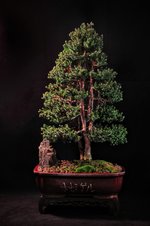Frozentreehugger
Masterpiece
Thought I would start a thread . For trees . That is native to your region of the world . And or something your playing with . That you feel has untapped potential . As bonsai . Pretty much anything goes species or cultivar . To broaden the interest . Does not have to be a tree that no one else has . Just something uncommon . That others may be interested in hearing about . Simple what it is . And why you feel it is deserving of . Use and or any success or failure .






